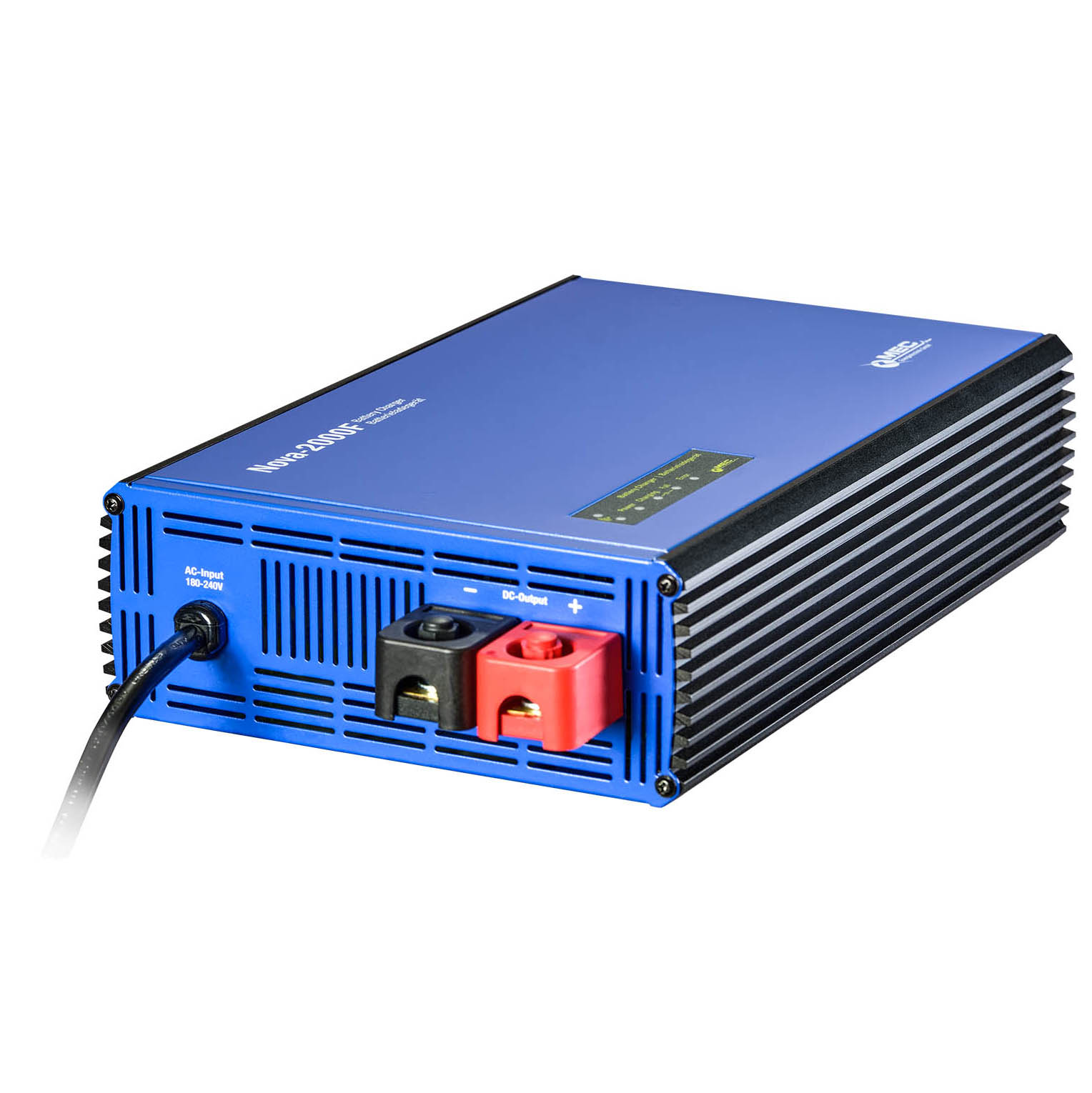


NOVA-2000F Battery Charger ![]()
The Power Station for Large Batteries:
Load-dependent fan ensures quiet operation. Well fit for fixed or on-board installations.
The Metal Enclosure – Attractive, Solid:
Made of extruded parts and painted sheet of steel elements. With wall-mount brackets for functional convenience.
“Auto Wake-Up” of the Battery:
The NOVA-2000F activates the battery BMS with pre-defined voltage pulses.
Automatic Charge-Restart:
Auto switch-off at “Battery-Full”. Auto charge-restart after a pre-defined number of days or a set voltage level across the battery terminals.
Charge Profiles – Customizable:
Charge parameters can be modified via the IR-Interface.
Technical Specifications
| Li-ion Batteries, 3.6V/Cell (nom.) |
| 12S 14S |
| 35A 35A |
| LiFePO4 Batteries, 3.2V/Cell (nom.) |
| 14S 16S |
| 35A 35A |
| Lead-based Batteries |
| 48V |
| 35A |
Product Specifications
| Output Power: | max. 2000W |
| Mains Voltage / Mains Pins: | 180 - 240VAC / 3-pin IEC-Plug, Mains-Switch |
| Operating Temperature: | -10°C to +40°C |
| Dimensions / Weight: | 307x200x75mm / ~ 4.2kg |
| Charge Cord: | 1.2m, stripped wire ends / Ring Terminals |
| IP-Protection Class: | IP20 |
| Safety Functions: | Short circuit-, Overload-, Reverse Polarity Protection |
| Additional Features (optional): | Ignition-Lock, Charge Enable |
| Certificates of Compliance: | CE |
Applications
Electric forklifts / stackers
Automatic guided vehicles (AGV)
Autonomous mobile robots (AMR)
Electric pallet trucks / picking vehicles
Commercial electric lawn mowers / lawn tractors
Electric tractors
Golf carts
Sightseeing vehicles
Food & beverage mobile vending carts
Documents

Flat K, 24/Fl., Blk 3, Golden Dragon Industrial Centre,170-182 Tai Lin Pai Road, Kwai Chung, N.T., Hong Kong
+852 2366-9610